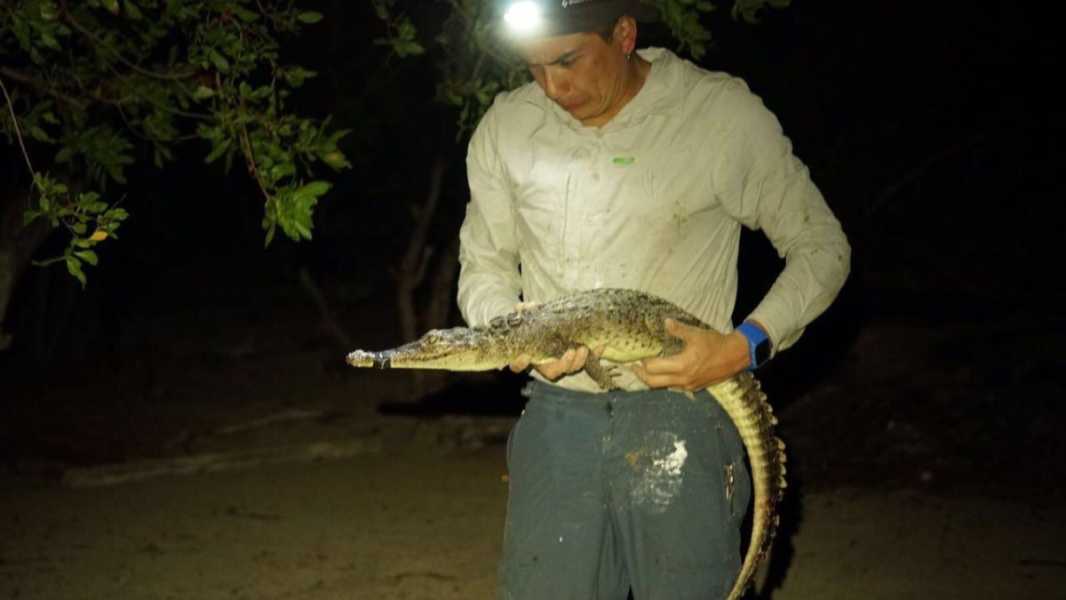
Crocodiles in the Caribbean are more diverse than previously thought. (Photo courtesy of McGill University)
Researchers have discovered two new species of crocodiles that live on isolated islands in the Caribbean. Both species are critically endangered, according to a new study.
The reptiles, previously considered American crocodiles (Crocodylus acutus), are now found separately on the island of Cozumel and the Banco Chinchorro atoll off Mexico's Yucatan Peninsula. Both populations number approximately 500 individuals.
Scientists identified the yet-to-be-named species while studying the genetics of crocodiles in Mexico's Pacific coast, Central America, and the Caribbean. The team found significant genetic differences between the Cozumel and Banco Chinchorro populations and other American crocodile species, concluding that the island crocodiles are distinct species, according to a statement released by McGill University in Canada.
“These results were a complete surprise,” said lead author Jose Avila-Cervantes, who conducted the genetic research during his graduate studies at McGill University. “We thought that Crocodylus acutus was a single species distributed from Baja California to Venezuela and throughout the Caribbean.”
The results of the study will be published in the June issue of the journal Molecular Phylogenetics and Evolution, which was first made available online on March 28.
American crocodiles are found in 18 countries, ranging from southern Florida to the Caribbean and northern South America. They share part of their range with Cuban crocodiles (C. rhombifer) in Cuba and Morelet's crocodiles (C. moreletii) in Mexico, Guatemala, and Belize.
The researchers were studying the differences between all three species when they identified two new species on the islands of Cozumel and Banco Chinchorro. Their work involved capturing and releasing crocodiles to collect blood and tissue samples for DNA analysis. The team also used genetic data from previous studies and compared physical differences between the crocodiles, according to the study.
The main physical differences between the different species are differences in the length and shape of their skulls. For example, Banco Chinchorro crocodiles have a longer and wider snout than Cozumel crocodiles, according to the study.
The discovery of the two new species could have a significant impact on conservation. Crocodiles in the region already face threats from human activities, including urbanization, pollution and tourism. The researchers found that populations in Cozumel and Banco Chinchorro appear stable, but are vulnerable due to their small size and limited range, the statement said.
“Now that we recognize these crocodiles as a distinct species, it is critical to conserve their habitat,” Hans Larsson, a professor of biology at McGill University and lead researcher, said in a statement. “Limiting land development and implementing prudent conservation strategies in Cozumel and Banco Chinchorro will be key to their survival.”
Crocodile Quiz: Test Your Knowledge of Prehistoric Predators.
Sourse: www.livescience.com





